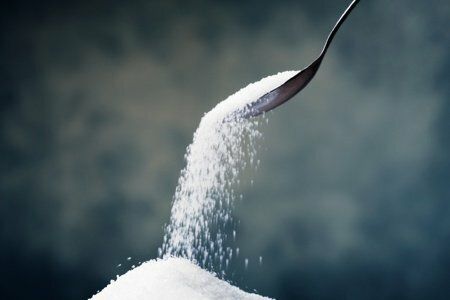Why “Added Sugar” Matters
August 19, 2014 20 Comments
The FDA wants to change the nutrition facts label to include “added sugars” versus the way it is now.

On the label now you see the total grams of sugar in a product listed - which may seem like enough information for most of us – but it isn’t enough according to the FDA.
For the average American, 16 percent of their total daily calories come from added sugars. The major sources are soda, energy and sports drinks, grain-based desserts, sugar-sweetened fruit drinks, dairy-based desserts and candy. (FDA)
Some foods, such as ice cream, have naturally occurring sugar in them and then manufacturers add more. How much more? We don’t know.
I think it would be helpful to understand how much sugar has been added to a product. This would help me to evaluate the relative healthy of many foods including flavored yogurts, cookies, granola bars, and cereals.
After reading so many labels, I can guess how many grams of sugar have been added and how many occur naturally but I am in the minority.
Fig Newtons are a perfect example of a cookie that I could better evaluate with an “added sugar” section. Frankly, I don’t think a cookie made with figs needs much sugar to be added (if any). If there was another brand that didn’t use added sugar, I would buy it.
When it comes to juices, I would think that you would include “fruit juice concentrate” as a form of sugar. Many juices have higher concentrations of juice added to make them sweeter than a regular glass of juice. I would kill to see how these “concentrates” adds to the sugar content to juice.
Granola bars? This would be huge! Raisins are in granola bars and have a bunch of naturally occurring sugar – but how many grams on top of the raisins are manufacturers adding? I want to know!
There is also the stigma of the world “added”. Perhaps if Americans understand that “added” is not good for you and you have to be careful when there are 5 or more ADDED grams of sugar per serving – they might cut back.
or maybe I am dreaming that labels will make a difference....better than nothing?
What do you think of the inclusion of added sugars on the nutrition facts label?
Other posts you might like:

Nutrition Labels Are Getting A Makeover
How often do you think you need a makeover? How about every 20 years?

When You Read An Ingredients List Do You Feel Like A Moron?
After spending 9 LONG years in higher education, you would think that Snack Girl would understand the basic chemistry of food. Alas, she is lost when looking at some food packages....

20 Comments:
Mike aka MonolithTMA
Henriette van de Weijer
Penny
regina mcnamara
Meredith Eyre
Sandi
Robin
Patti
Melissa Ann
Stacie
Bet
Debbie
C
S
Henriette van de Weijer
I_Fortuna
Susan
bob giles
Linda
Kai